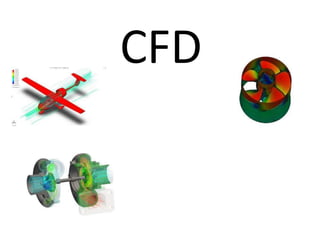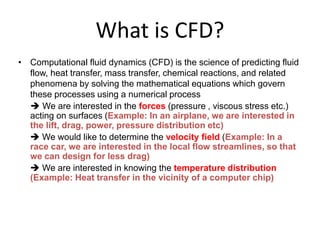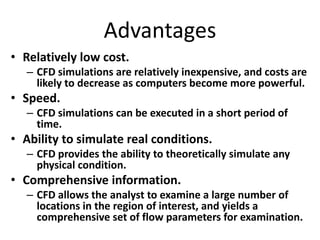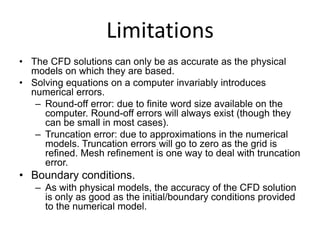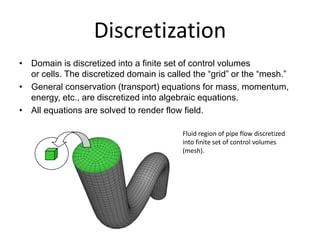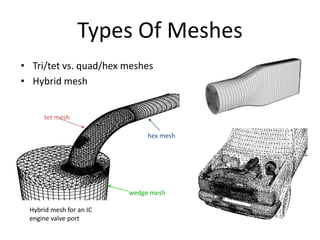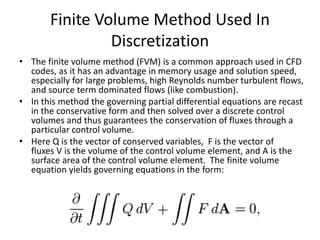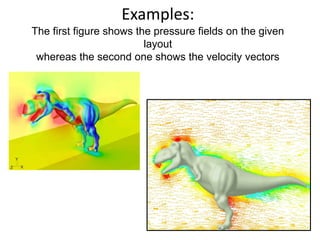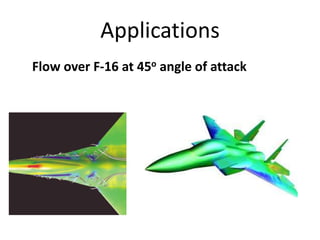Computational fluid dynamics (CFD) is a numerical method used to analyze and solve fluid flow problems. CFD uses the mathematical equations that govern fluid motion and heat transfer to simulate the behavior of fluids. It provides a comprehensive examination of systems through modeling of velocity, pressure, temperature, and other properties without extensive physical testing. CFD has advantages of being relatively low cost, fast, and able to simulate real conditions. Limitations include accuracy depending on physical models and numerical errors from discretization. CFD is commonly used in engineering applications like aerodynamics, automotive, and electronics design.
